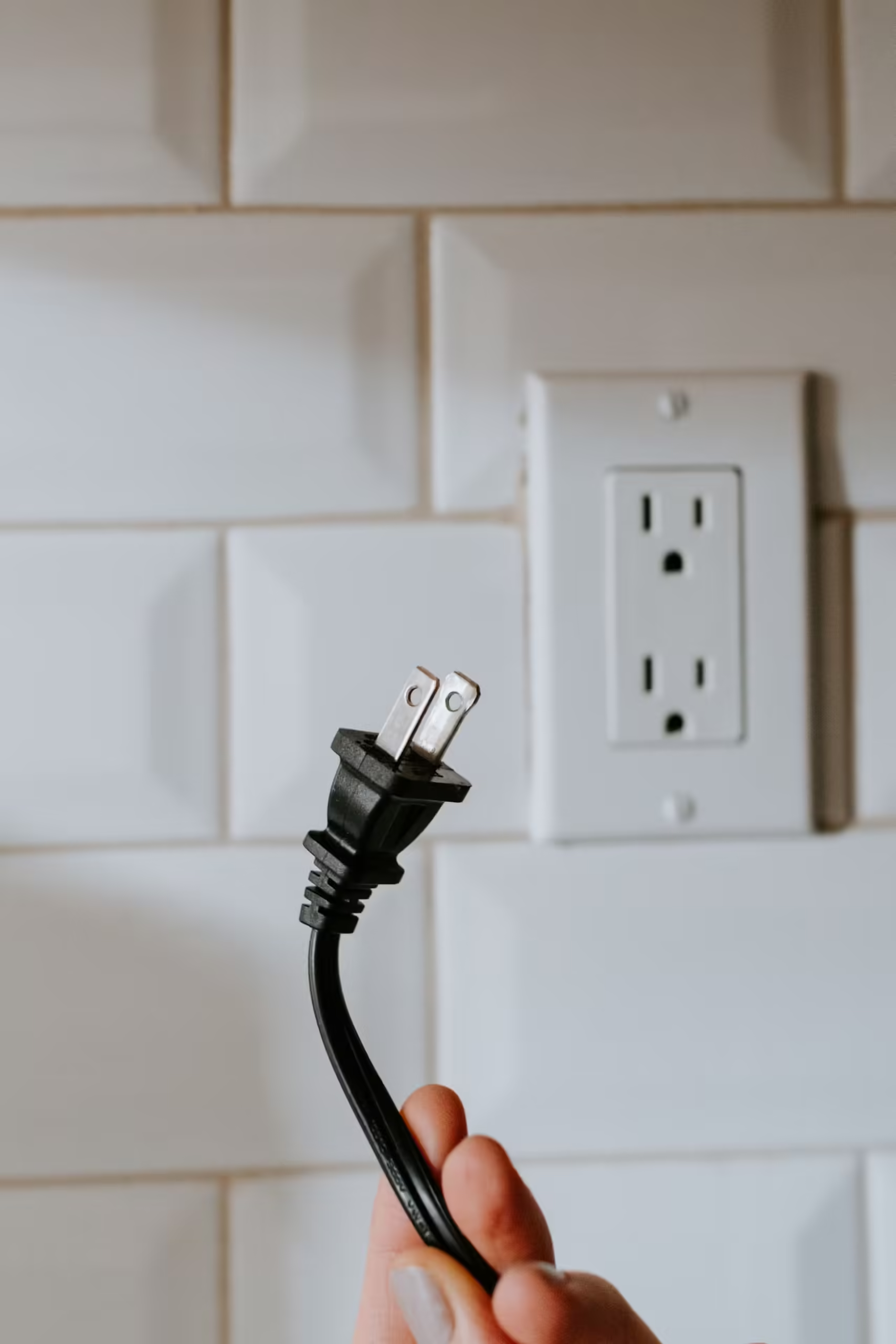Many people make the common mistake of picking the longest and cheapest option when shopping for power cords.
Unbeknownst to them, longer mains cords aren’t ideal in all circumstances. Cheaper cables may also prove costly in the long run, especially if the wire is poorly rated for the appliance you’re using it with.
To help you make an informed decision, we’ve prepared a definitive guide to choosing the right power cord for your electrical devices. Read on and be inspired!
Check the Cord’s Gauge Ratings
A power cord’s gauge denotes its diameter or thickness. It’s determined by measuring the cross-section area of the cable’s conductor material, excluding the insulation jacket.
Power cords come in different gauge ratings. These ratings are typically represented by a number and the initial AWG (American Wire Gauge).
Most power cords have a rating of 10 AWG, 12 AWG, and 14 AWG. However, you can also find cables rated 8 AWG, 16 AWG, and 18 AWG.
There are two fundamental things to note as far as a mains cord’s thickness is concerned.
First, the gauge determines a cable’s current handling properties. Thicker wires handle electric current remarkably well.
Second, the gauge rating on a power cord is inversely proportional to its thickness. The smaller the numerical value, the larger the wire’s cross-section area.
The implication is that a 10 AWG power cord is thicker and has superior current handling abilities than a 12 and 14 AWG wire.
- Determine Your Device’s Power Requirements
Electrical devices vary significantly in their power requirements. Therefore, it’s prudent to understand your equipment’s current needs before getting them a befitting mains cord.
Heavy-duty appliances require thicker power cords. A 10 AWG cable would be ideal for connecting equipment like recreational vehicles (RVs) and electric vehicles.
A 12 AWG power cord would suit construction equipment, which is still heavy-duty but not as demanding as RVs and electric vehicles. You could also use these cables with power-hungry household appliances, such as refrigerators and ovens. 16 and 18 AWG are rated for light-duty devices. Smartphone chargers and lighting systems are excellent use cases.
16 and 18 AWG cables are also relatively affordable. Purchasing a 16 AWG cord would be a great economic decision if you only want to power your table lamps. Lastly, 14 AWG power cords are incredibly versatile. You can use these cables with various household and office appliances, including high-power and light-duty equipment.
Longer Isn’t Always Better
We’ve already hinted at the fallacy of choosing a power cord based on its length.
One exciting thing about mains cables is that there are multiple lengths to pick from. Some are as short as three feet, while others are over fifty feet.
But how do you strike the right balance?
First, you’ll need to measure the gap between the appliance that needs powering and the nearest wall socket. Then, choose a power cord a few inches longer than the exact distance.
Shorter power cords minimize tangles and tripping hazards. They also handle electric current better than their longer counterparts. However, an overly short cable would be prone to damage due to excess tension.
Longer power cords let you connect an electrical appliance further from a wall outlet. But when a cable is very long, there may be a significant voltage drop and increase in resistance, reducing its current handling abilities.
If all other factors are constant, you’re better off with a shorter power cord. If you must buy a longer cable, consider one with a lower gauge rating (preferably 12 or 10 AWG).
Examine The Wire’s Number of Prongs
This is one area many people skimp on when shopping for power cords. You’ll only realize that you made a terrible mistake when attempting to plug the cable into a receptacle or extension cord.
While you can always use an adapter to connect incompatible power cords, purchasing the right cable will save you additional expenses and stress.
There are two options to pick from – two-pronged and three-pronged power cords.
Two-pronged mains cords like this NEMA 1-15 are excellent for powering standard household devices, such as home entertainment systems, lighting fixtures, electric fans, and chargers.
However, 2-pronged cords aren’t grounded. That makes them unideal for power-hungry appliances, such as refrigerators and microwaves.
Inspect the Insulation Material
A power cord’s insulation material, also known as outer jacket, is another primary factor to consider when shopping for these electrical components.
Checking the outer jacket is particularly important if you’re buying a main cord for outdoor usage.
Various environmental factors, like temperature and sunshine, may degrade a power cord’s insulation jacket. The resultant wear could expose the conductor wires, endangering your safety.
The best way to gauge the weather-resistant capabilities of your power cord jacket is to look out for the initials SJEOW on the cable. SJEOW stands for;
- S – Service grade
- J – Hard service
- E – Temperature resistant
- – Oil resistant
- W – Water and sunlight resistant
A jacket with all five initials is perfect for outdoor use.
Wrap Up
Choosing the right power cord is an involving decision that calls for keen research and due diligence. We hope the insights shared in this article will be useful the next time you shop for a mains cable for your home or office equipment.
